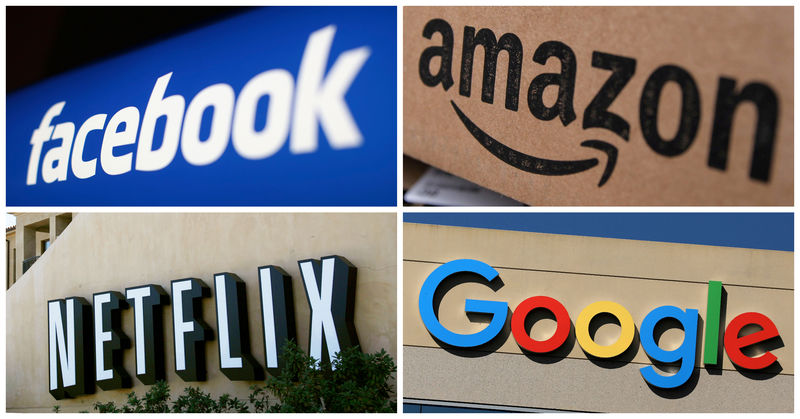(Bloomberg) -- An oddity is occurring as the stock market grinds back to an all-time high: Big tech is getting left behind.
A risk-on rotation rippling across markets has the tech-heavy Nasdaq 100 flirting with a third straight loss -- which would be its longest slide since March -- as the S&P 500 climbs for an eighth consecutive day and approaches its February record. Meanwhile, the battered Russell 2000 gauge of small caps is staging a comeback, with a jump of more than 12% over the past month.
A string of better-than-expected economic data combined with budding optimism over a coronavirus vaccine has traders ditching the tech-heavy “stay-at-home” trade that drove much of the market’s 50% rally since the March lows.
An index tracking airlines jumped 10% this week, and a Bloomberg basket of stocks that could win during a rebound in activity, including hotels, resorts, cruise companies, is up for a fifth straight day, gaining 14% in that stretch. Meanwhile, a custom gauge of firms that benefit in a lockdown environment and prolonged recovery has lost about 2.5% since Thursday.
“In the past couple of days, you have seen the economically sensitive stock sectors outperform relative to the stay-at-home stocks,” said Brent Schutte, chief investment strategist at Northwestern (NYSE:NWE) Mutual Wealth Management Company. “That has to do a lot with the stimulus that is coming, plus the vaccine and treatment news continues to get better on a daily basis.”
After helping to power the Nasdaq 100’s 27% year-to-date rally, high-flying megatech names such as Apple Inc (NASDAQ:AAPL)., Amazon.com Inc (NASDAQ:AMZN)., Google’s parent Alphabet (NASDAQ:GOOGL) Inc. and Facebook Inc (NASDAQ:FB). are coming under pressure. An index of FANG stocks of tech titans has dropped for three straight days -- the longest streak in about three weeks -- and is down about 2.4% since Thursday.
The risk appetite uptick spurred reversals elsewhere across markets. Long-dated Treasury yields climbed after surprisingly strong producer-price figures. Real interest-rates -- which strip out the impact of inflation -- at one point rose by the most since June, after plunging to record lows last week. Meanwhile, gold prices dropped by the most in seven years.
“Given the rise in rates and the recent bounce in the dollar, it seems to be giving growth and gold investors a reason to pause,” said Sameer Samana, Wells Fargo (NYSE:WFC) Investment’s senior global market strategist.
©2020 Bloomberg L.P.
